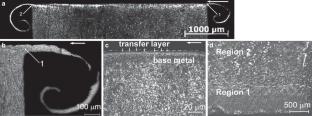Deformation and deterioration of C235 steel contact layer in dry sliding against C45 steel under high density alternating current
Abstract
The paper studied the tribological behavior of the C235 steel under high-density electric current density over 100 A/cm2. It was shown that dry sliding of steel against steel under electric current, induced plastic flow in the contact layer ~75 μm thick beyond the nominal contact area in and against the sliding direction. It was supposed that the surface waves induced plastic flow. These waves could be excited by numerous mechanical and electrical pulses arising in meeting the surface microroughness. Sliding wear did not provide the material weight loss, although wear particles did appear. Moreover, the transfer layer formation was observed on the contact surface. The X‑ray phase analysis showed that it contained more than 70 vol.% FeO. The sliding surface morphology on the nominal contact area consisted of two regions, one of them having melting traces. It was assumed that high self-induction pulses appeared in the contact area and caused high-density displacement currents. The latter directly affected FeO ions and transferred them to the melt. Numerous discharge traces were observed in the melting zone. Dry contact spots were detected also. That confirmed that the current passed through the melt and contact spots in the form of discharges.


 求助内容:
求助内容: 应助结果提醒方式:
应助结果提醒方式:


